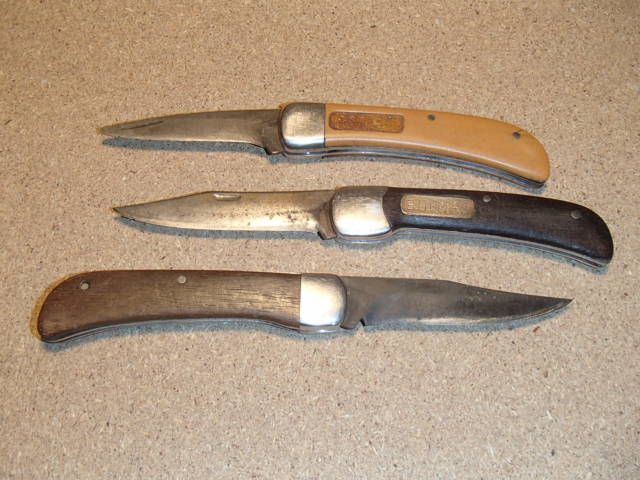I have three old power hacksaw blades. Two are 0.088" thick and 1.7" deep. One is 0.075" thick and 1.45" deep.
You can barely read on one where it says, "High Speed Molybdenum Stee...."
I would not want to reheat treat them but tempering in my oven would be an option. So the plan would be to grind away material without ruining the heat treat.
I know that "High Speed" steel is more resistant to temperature damage than other steels, hence the name - faster cutting speeds are acceptable without damaging the hardness.So I'd have a bit of margin for error but I'd still go slow and attempt to keep the metal cool.
Any advice? I know some of you are very experienced in knife making.
You can barely read on one where it says, "High Speed Molybdenum Stee...."
I would not want to reheat treat them but tempering in my oven would be an option. So the plan would be to grind away material without ruining the heat treat.
I know that "High Speed" steel is more resistant to temperature damage than other steels, hence the name - faster cutting speeds are acceptable without damaging the hardness.So I'd have a bit of margin for error but I'd still go slow and attempt to keep the metal cool.
Any advice? I know some of you are very experienced in knife making.







